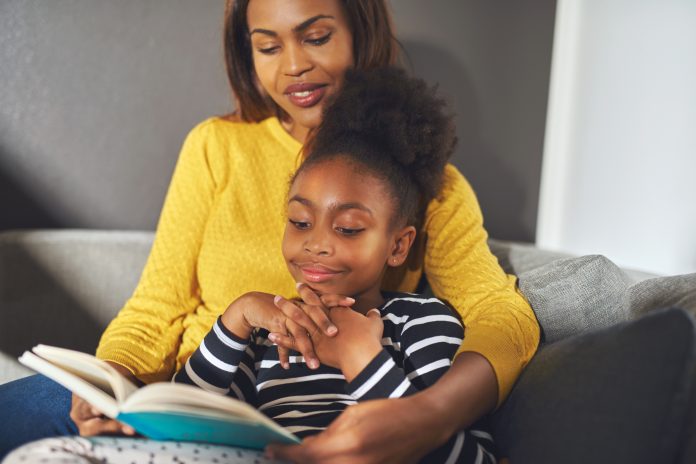Joy Mbakwe, Head of English at Lilian Baylis Technology College, discusses an ongoing issue in education – the absence of a diverse curriculum in classrooms around the UK
I have been an avid reader since I can remember. I read whenever and wherever I could, night and day. I have memories of using my phone as a torch and using lights emitted from street lamps as my mother drove just so that I could devour my latest book.
My love for reading soon blossomed into a desire to tell my own stories and I began to fill my exercise books with pages of created realities that I longed to be a part of. Despite being a young Black girl, growing up in the heart of south London, my stories were littered with Lucy’s, Molly’s and Maisie’s. My first stories, written in response to the many books that had captured my heart, never had a single Black protagonist.
The first moment of realisation
It was only when I encountered Malorie Blackman’s character Sephy from Noughts and Crosses that I realised that someone who looked like me was worth seeing in the pages of a book and that my story could be of value – compelling even. Sephy’s narrative arc took hold of me and still, to this day, I remember reading the text again and again because of the connection that I felt she and I shared.
Because while I loved the Princess Diaries, I knew on some vague, subconscious level I could never be part of that story. For one, I had never seen a princess who looked like me and so despite the tragedy that surrounded Sephy’s character, I wanted to be her – she was visible, significant and important enough to exist in a novel.
It is only now in my role as an English teacher that I realise how truly harrowing it is that I was never at the centre of the stories that I wrote. Even in my imagination, the only thing in the world that truly belonged to me, people who looked like me were never in the light.
Even in my imagination, the only thing in the world that truly belonged to me, people who looked like me were never in the light.
My inability to create characters with similar identities to my own lay solely in the fact that I hadn’t seen it done before. Although this was over 20 years ago, things have only shifted ever so slightly, even in the most progressive classrooms. Recent research from the Lit in Colour campaign, a partnership between Penguin Random House and the Runnymede Trust, has found that fewer than 1% of students in England study a book by a writer of colour at GCSE. This leaves authors of colours, specifically Black authors, sidelined and forgotten, just as I was in my own tales.
What does this mean for Black students now?
I look at my Black students in my English classroom and I see myself. I see them watching as others sit at a table and feast on the stories that we are told repeatedly are equally our inheritance, our national identity. I observe them, bystanders, wrestling with stories that I say are universal but were never created with them in mind. Subconsciously, they ask themselves: is this table for me? Did those who created this table ever imagine that I would be sitting here?
I observe them, bystanders, wrestling with stories that I say are universal but were never created with them in mind.
When questions are raised by those who desire to see a more inclusive classroom – and society – they are accused of politicising education, as though the curriculum could ever be neutral. Such a vehicle, intended to create citizens of the world, is deeply informed by what matters to the person who creates it. The reality is that this power lies in the hands of those who have often been taught that the way to eradicate racism is to be blind to an individual’s colour. As a result, educators like myself spend our time proving that racism is still very much an issue.
So while it’s encouraging to see the Education Secretary stating in the House Magazine that we need a more diverse curriculum, there are many educators still having to make a case for why this change is necessary.
When I am asked to justify the necessity of a diverse curriculum, I am also being asked to justify my existence in the English classroom. By failing to include other voices, we send a clear message: some lives matter more than others. When we only tell stories from a single perspective, we are implicitly communicating that some stories are inherently more valuable than others.
To be neutral, is to be complicit
I appreciate the conflict that such an ask presents for some practitioners – personally, politically and professionally. When you first stepped into the classroom, your intentions were simple and pure: you wanted to make a difference in the lives of young people.
But if 2020 taught us anything, it taught us that we cannot remain silent on the issues that matter most and to be neutral is to be complicit. Millions of people all over the world were made aware of the inequality that is rife in our society and our students, who also witnessed this historic shift, now require more from us than previous generations of teachers. They are watching the world respond to the calls from the marginalised groups for change and are questioning why their school teachers have not done the same. I am not asking that we remove, or replace books in our curriculum, only that we widen what’s on offer, so that all our students feel valued.
Finding the right material is a google search away. More texts are available now, and thanks to Lit in Colour, exam boards are changing. As a school teacher, I know how little time we have, how pressed we feel and how utterly intense our working days are. How can one ask you to rewrite schemes of work that are already tried and tested? I ask because it is the right thing to do.
Whenever the work ahead feels insurmountable, ask yourself: whose lives matter to me and is this evident in my classroom? And who knows, your commitment to this journey might result in a young girl finally being able to write a tale that she is at the centre of.











